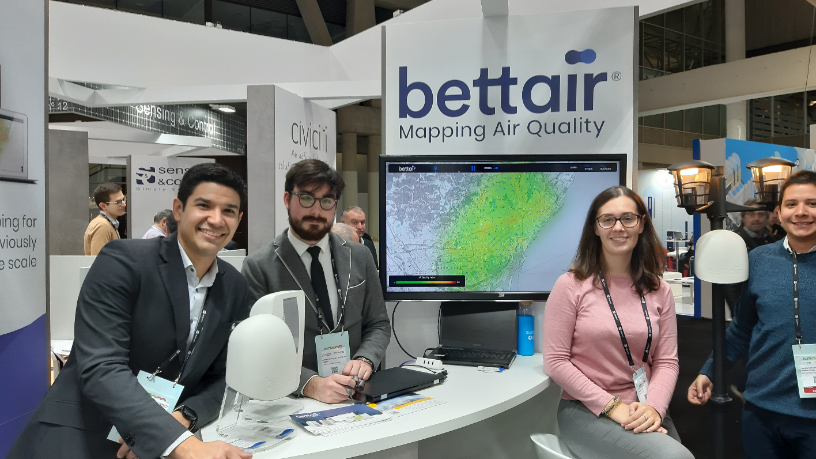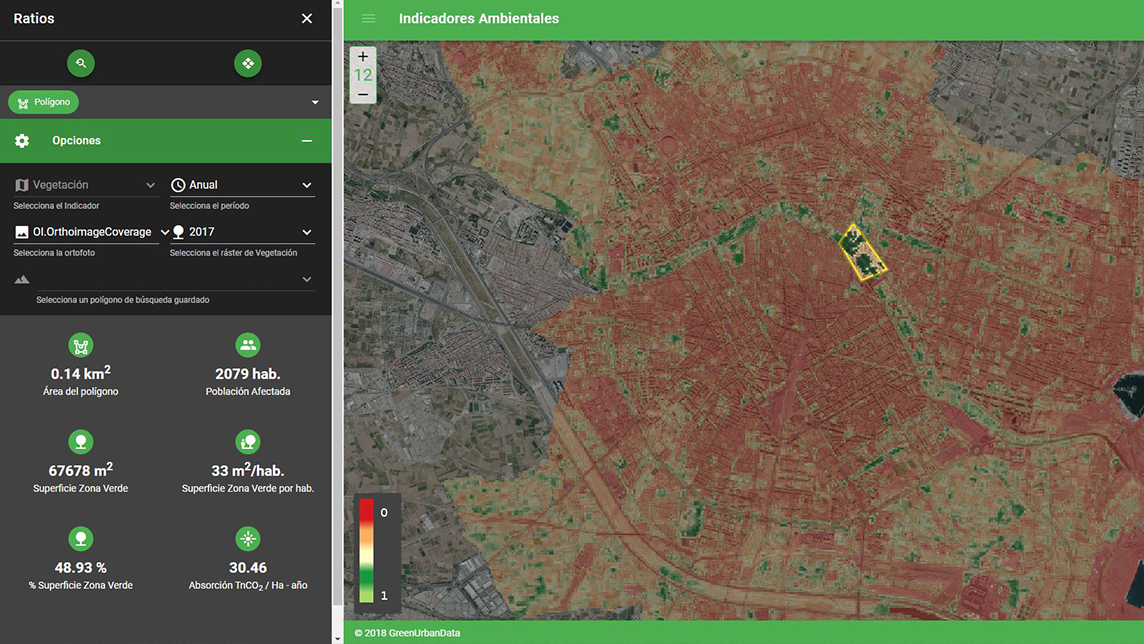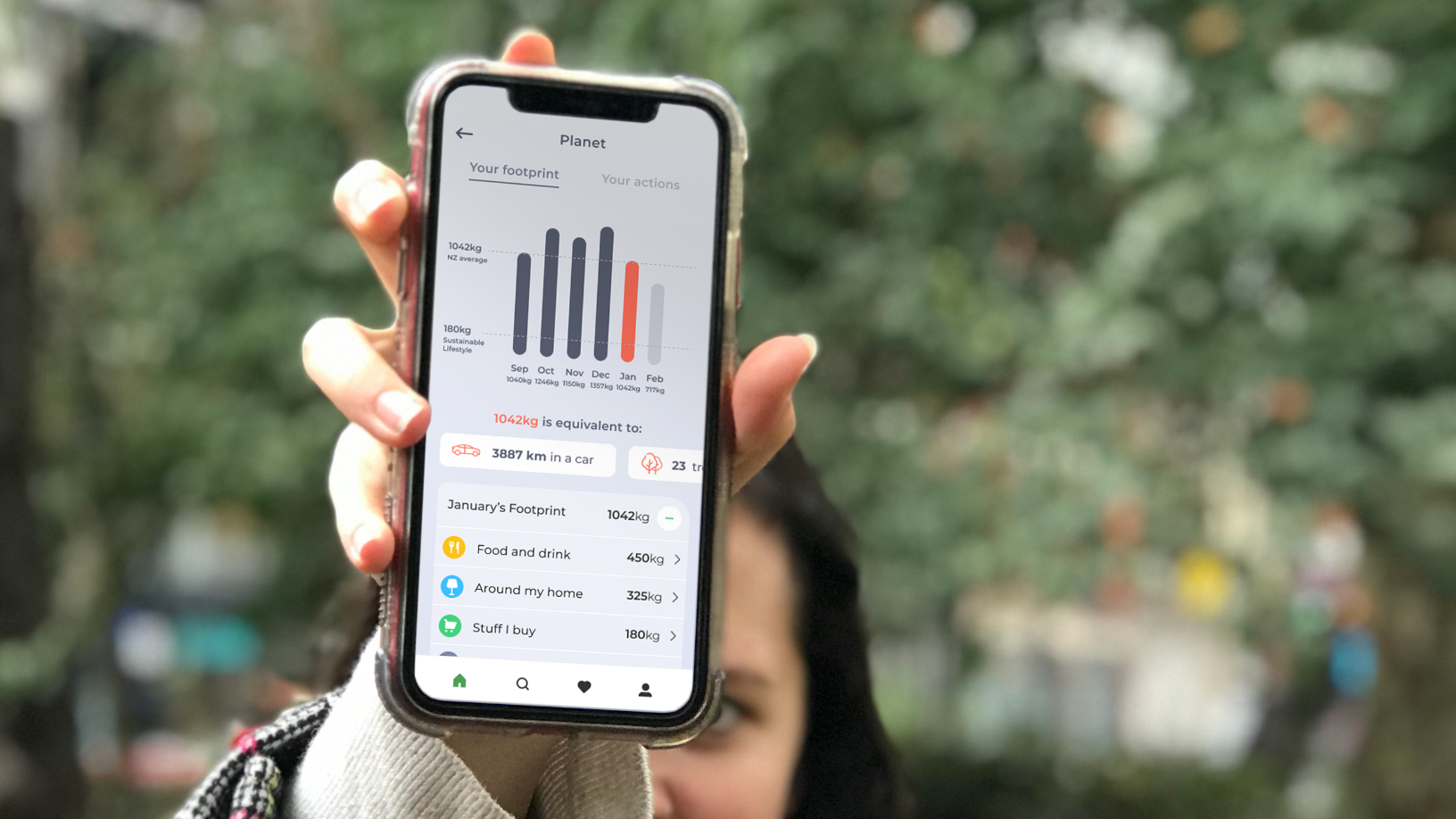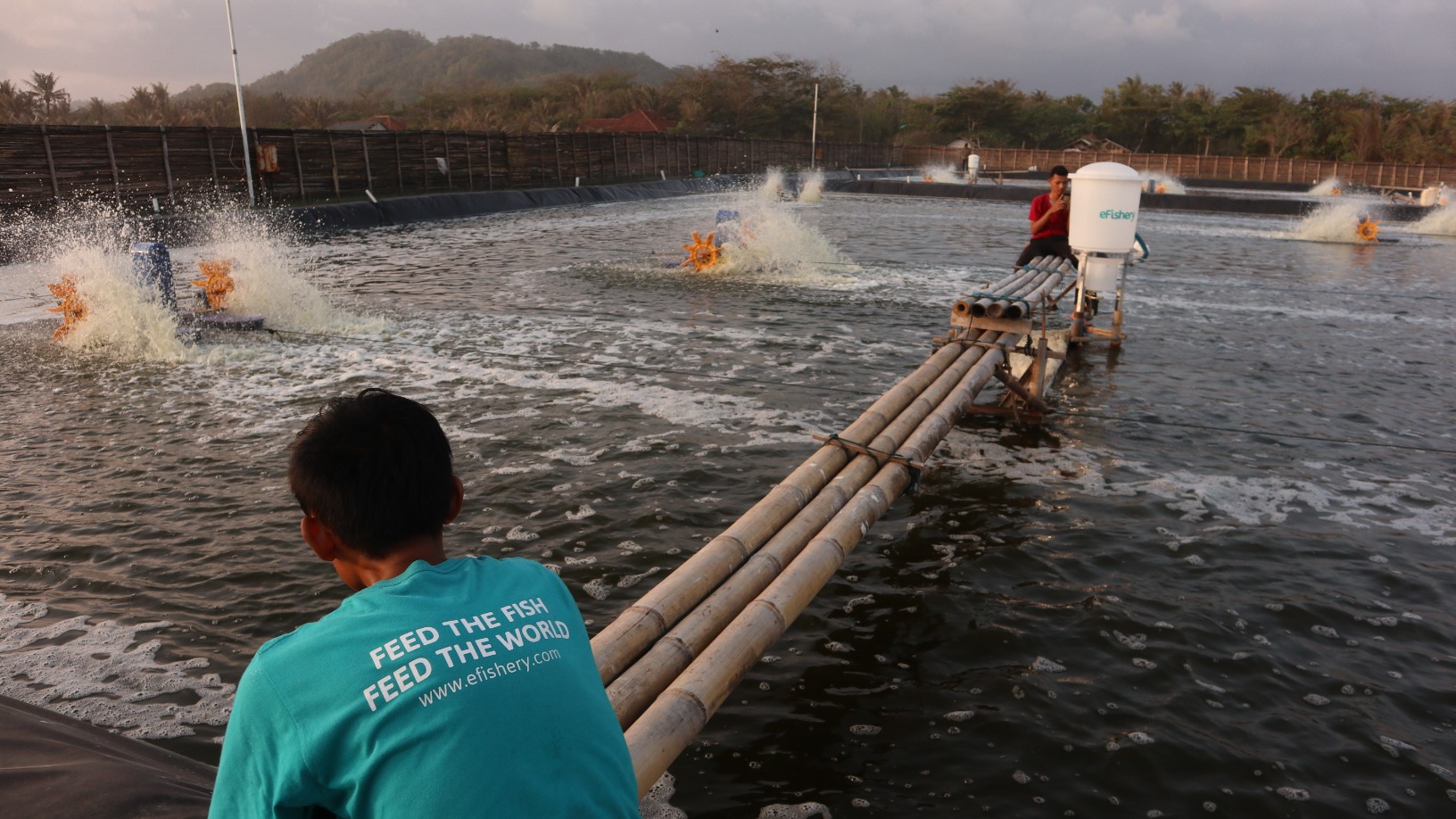As the need to reduce air pollution gets more urgent, demand for reliable air quality monitoring systems in urban areas is fast increasing. Barcelona-based startup Bettair Cities is pitching an AI-based sensor-platform air monitoring solution that offers more accurate and faster readings, so cities can respond more quickly to spikes in pollution levels.
Every year in Europe, outdoor air pollution causes some 800,000 people to die prematurely as well as reducing the lifespan of the average European by more than two years, researchers estimate. At the same time, current EU laws require cities to regularly monitor air pollution and keep noxious emissions below legally set limits.
These factors are serving to drive demand for more reliable air quality monitoring systems – a market forecast to grow to about $6.4bn by 2025 on a 7% CAGR from 2020. Currently, cities rely almost entirely on small monitoring stations that can cost hundreds of thousands of euros each.
Seeking to disrupt the sector, Bettair will commercially launch its monitoring units in early 2021. At a starting price of €4,500, each unit runs on a recyclable, replaceable cartridge costing half the price of a new sensor. Currently, because of EU requirements, pollution-monitoring sensors – and in the case of Bettair's product, cartridges – must be replaced every two years. Bettair hence reduces costs for its clients while creating a recurring revenue stream for itself.
Its system also offers 11 air quality indicators that measure six of the most commonly regulated urban contaminants in the same unit – a feat the company says is unique in the market.
“These six contaminants [nitric oxide, nitrogen dioxide, carbon monoxide, ozone, and industrial contaminants sulphur dioxide and hydrogen sulphide] are the standard ones monitored by current air monitoring stations,” Bettair CTO and co-founder Leonardo Santiago told CompassList at Barcelona's recent Smart City Expo World Congress.
Results in 5 minutes
The sensory units also measure the emissions of three sizes of particles – ultrafine particles, fine particular matter and particulate – as well as environmental variables like temperature, humidity and atmospheric pressure. It can also measure noise pollution in decibels and can be run on solar power, if needed.
“Nitric oxide, nitrogen dioxide and particulate matter are a general problem, the main source of pollution in European cities and are what municipal air quality teams are focusing on now,” Santiago said.
Beyond the hardware, Bettair's air quality monitoring system incorporates a platform as a solution (PaaS) that stores and processes the raw data collected by the sensors. Using ML, the platform calculates contaminant concentrations with more than 90% accuracy, compared with 60% using electrochemical sensors on their own. The solution also pretty much runs in real time, taking just five minutes to deliver results on its platform, versus up to three hours for traditional monitoring stations.
When Bettair first tried to introduce its system to the Catalonian government, the Generalitat, in 2016, the team was told that low-cost air quality sensors simply wouldn't work. Cities were used to expensive air pollution monitoring stations housed in small buildings and regularly maintained by teams of technicians.
Bettair spotted another issue: existing solutions were often better suited to measuring pollution in industrial areas rather than urban areas, making them relatively unreliable tools for measuring air quality in cities. And so Bettair came up with cheaper, compact electro-chemical sensors that can be installed on city fixtures like lamp posts or traffic lights.
“Following tests of our technology with the Generalitat, their exact words were: 'we've never seen anything work this well before,'," Santiago said. This praise gave the founding team the confidence to formally launch Bettair Cities the following year.
Convincing users through pilots
The company is holding further municipal trials this year, before going to market in 2021. “Our idea is to use this year's pilots as a showcase to gain new customers, especially because many cities have been reluctant to try new technologies as there were similar cases in the past that did not work.”
Bettair's cloud-based platform reports results from an unlimited number of sensors, allowing individual analysis from each unit – including historical data for each contaminant – to be mapped and displayed. “The easiest way to visualize all the data is by combining all of the pollutants measured into the single visual representing the air quality index. On top of that, we can create heat maps to show on top of a map of a city for each specific pollutant,” said Santiago.
The company is also adding an algorithm that incorporates additional external data from partners such as global weather forecast providers to enable up to five days of air quality forecasts.
"We have done some tests and we have gotten very good results for the peaks in the pollution which is what matters, achieving correlations better than the ones provided by the Copernicus Atmosphere Monitoring Service (CAMS). In the traditional system, normally there is no real-time forecast for air quality right now,” Santiago added.
From pilots to profitability
Bettair was founded in 2017 after Narcis Clavell, under his guise of angel investor and President of tech consultancy Ateknea, participated in the Citi-Sense project funded by the European Commission that aimed to deploy sensors to improve the quality of urban life in eight European countries. Clavell recruited Ateknea's Head of IT Josep Perello and IT engineer Santiago to develop a personal air quality monitor for the project.
“After the project ended, we had a fairly good product to measure air quality and we noticed that traditional monitoring stations were expensive and there was a lack of low-cost solutions,” Santiago recalled. The trio founded Bettair Cities and began work on a “primitive form of algorithm to what we use now.” Perello is now Bettair's CEO.
Under the Citi-Sense project, Bettair conducted pilots in eight European cities, including Barcelona, enabling the startup to test its technology against traditional monitoring stations. EU cities must have a minimum number of weather stations per inhabitant. Barcelona, for example has seven, while the smaller Catalonian city of Girona has only one. “There, we installed four units, four times what they had,” Santiago said.
Principally funded by Clavell and run out of Ateknea's Barcelona office, Bettair has so far received a Phase 1 grant from the EU's innovation funding mechanism, Horizon 2020.
The company's pilots last year integrated a LoRaWAN module (long-range, low-power wireless technology) in the node and tested it in Southampton in the UK and Santander, Spain.
“The Horizon 2020 funding will allow us to do pilots in Barcelona, and in Rome and other cities in a consortium including Cisco and Telecom Italia,” said Santiago. The pilots will help Bettair showcase its solution and win over customers, whose profile will vary from city to city.
“In some municipalities, there is a private company monitoring the air quality monitoring stations, in other cities it is a higher government body. For example, in Barcelona it is the Generalitat of Catalonia that manages all the region's monitoring stations,” Santiago said. Other potential customers are real-estate or housing management companies who could use low emissions readings as a sales tool.
“Our ultimate aim is to go global with the product after [the] pilots,” Santiago said. “One of the best things is … we don’t need a high volume of sensors to be profitable” because the cartridge sales lock in recurring revenue.
“We calculate that to break-even, we only have to be in two or three cities, though our goal is to be in 50–80 cities by 2026.”











